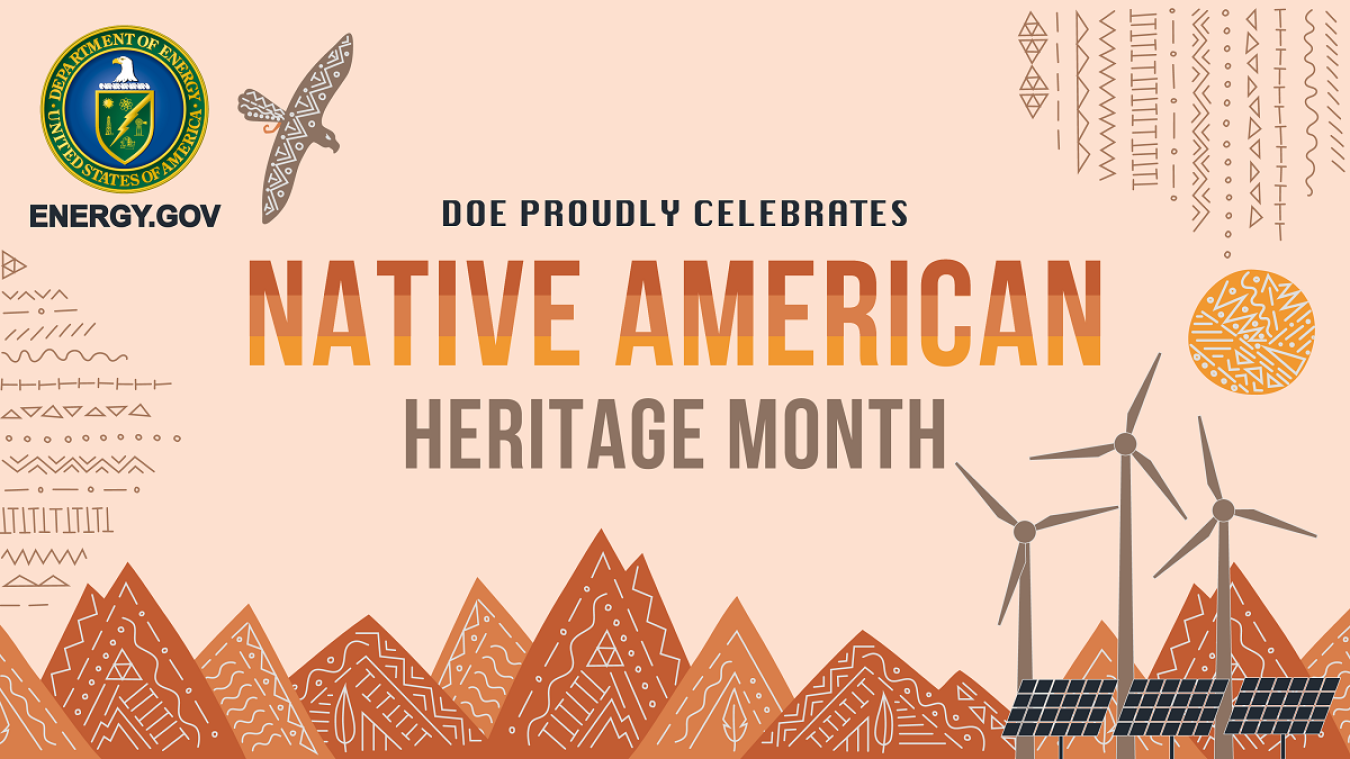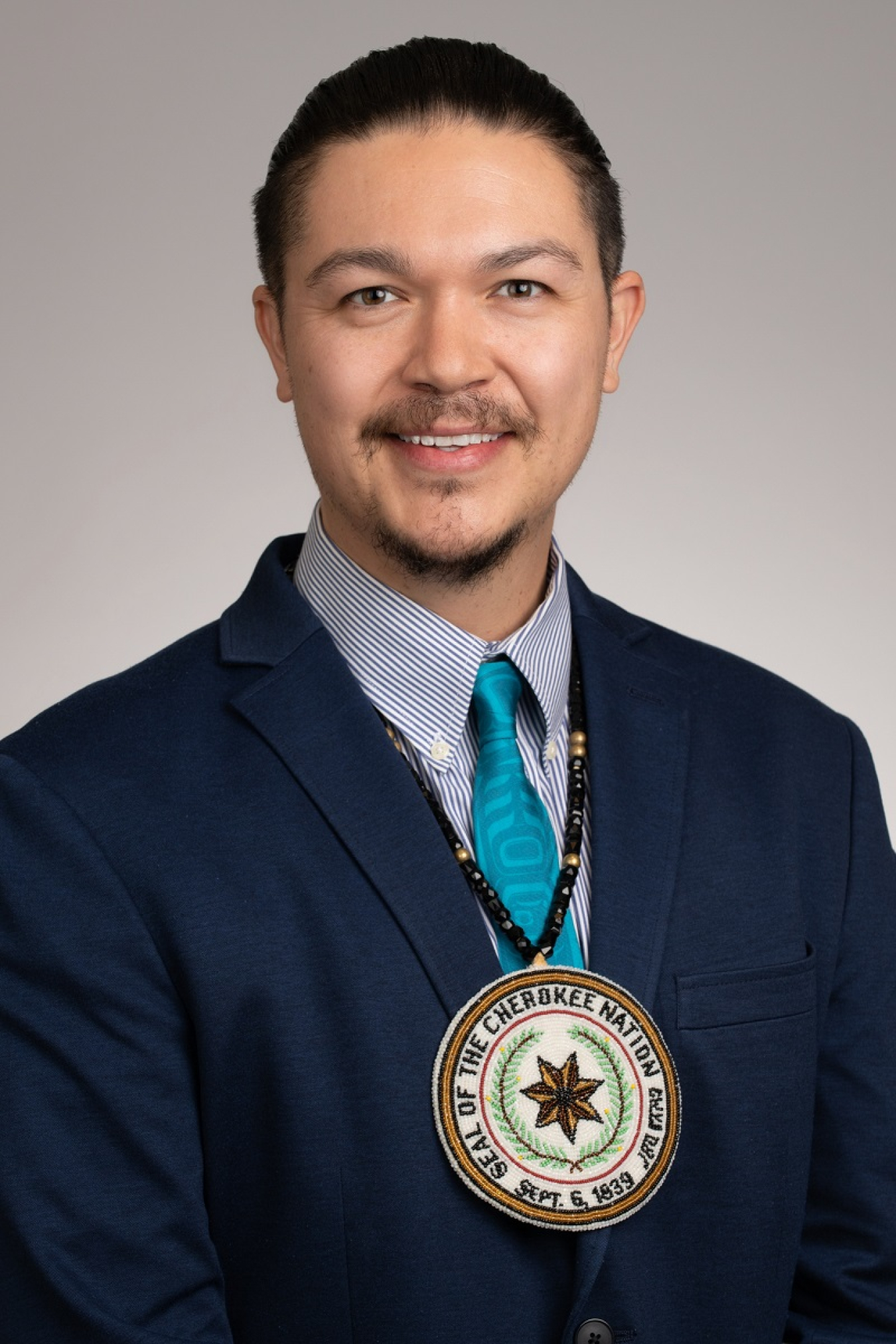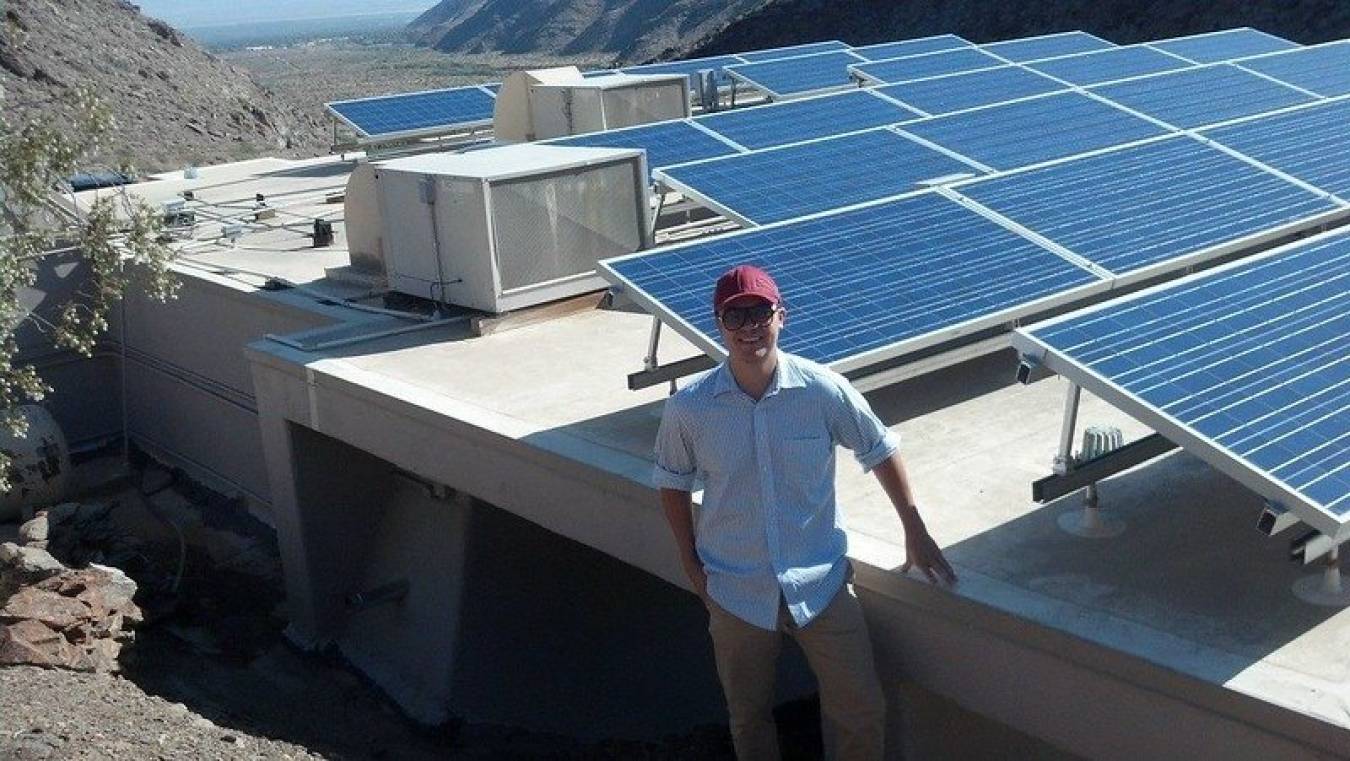Staff member Tommy Jones shares his thoughts on the month-long recognition.
Office of Indian Energy Policy and Programs
November 11, 2022Staff Member Tommy Jones Shares His Thoughts on the Month-Long Recognition

November marks Native American Heritage Month, a time to honor and celebrate the rich and diverse cultures, traditions, and histories of Native American people and to acknowledge their many important contributions.

In this blog, Dr. Tommy Jones, Deployment Specialist at the Office of Indian Energy, shares his perspective on the month-long celebration and reflects on his own heritage.
Dr. Jones is from Oklahoma and is an enrolled citizen of the Cherokee Nation (Oklahoma) and Naknek Native Village (Alaska), as well as a Native shareholder of Bristol Bay Native Corporation of Alaska. Learn more about Tommy’s role as deployment specialist in his Meet the Team blog.
How do your background and heritage influence or inspire your work at the Office of Indian Energy?
There were times in my childhood where my family lacked electricity and had difficulty paying for electric bills. I know how important staying warm in the winter and having lights to complete homework can be. My goal is to help Indian Country lead the charge on developing clean, local and meaningful changes so that those who want electricity have the ability to have it.
How do you celebrate Native American Heritage month?
Coming together, being with family and friends is what is most meaningful to me. It’s important to point out that celebrating Native American culture and history has changed a lot from when I was young. My father would never let my brother and me go to school on Columbus Day or the “Land Run Day,” where students claimed the “unassigned lands” of the playground. Those events do not honor Native Americans’ culture or history. Having a Native American Heritage Month, Indigenous Peoples’ Day, and discussions about contributions Native people have made to this country is representation that makes me proud and inspired.
What would you like people to know as they learn about Native American heritage?
First, there are over 500 tribes across more than 30 states from the Lower 48 and Alaska. Each community is unique—unique in language, culture, population, land status, economic development, and the list goes on. It is important to understand that tribal communities—not unlike each U.S. state—can be quite distinct from one another.
Second, Native Americans serve in the U.S. military at a rate that is five times the national average. This is not insignificant, and many times, such as with Code Talkers, Native Americans have been critical members to U.S. operations.
Third, there is a crisis of missing and murdered Indigenous people. Thousands of reports of missing people have been filed. For example, in 2016 alone there were over 5,000 reports of missing Indigenous women and children. Highlighting this ongoing tragedy is important so that not only are Native Americans serving this country in record numbers with the military, but our people are also protected. To serve and not be protected is unacceptable.
What else would you like to share as we celebrate and recognize Native American Heritage Month?

I like pointing out that when tribes succeed, there are cascading positive impacts that extend beyond reservation boundaries. When tribal communities invest in infrastructure, energy development, and energy efficiency, it is not only investing in their respective communities’ futures; it is investing in all of our futures. The progress made in Indian Country benefits all of us. Native people and tribal governments are resilient, determined, and capable. It is an honor to be able to work with tribes across the United States that are doing what it takes to realize their energy visions, and most importantly, creating changes in the lives of their people.
I know firsthand the real impacts our Office can make in people's daily lives, and I’m just happy to play a small role in helping Indian Country. I am inspired every day by the work we are doing.

